We must become the forest
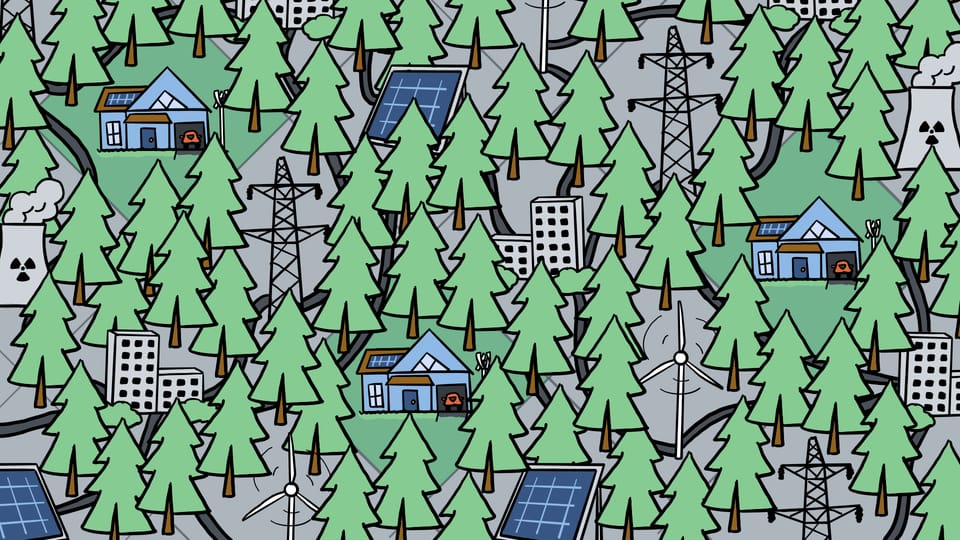
For the past couple of weeks, we've been talking about the limitations of the American energy system.
To recap: in our top-down system, a select group of utility companies oversee every step of the energy process. That includes how electricity is generated, transmitted over long distances to local distribution centers, and locally distributed. Our system has always worked this way—ever since the first electric streetlamps turned on in NYC—and for the most part it's been more or less Gucci.
But a sudden spike in demand for electricity is pushing our system to its limits. Not to be overdramatic, but when demand thoroughly exceeds our capacity to meet it, electricity prices will skyrocket, utilities will shut off our power (starting with the poorest among us) to keep data centers happy, and ratepayers (i.e. anyone who pays a monthly electric bill) will be left in the dark, holding the bag.
So what can we do? We must reinvent the system from the bottom up.
Last week's post was all about Distributed Energy Resources (DERs). The idea is that if everyone can make a little bit of energy at home with solar panels and batteries, we won't need utility companies to run the show. Millions of DERs can be aggregated in a singular behemoth capable of outproducing even the most powerful power plants.
Enter the Virtual Power Plant (VPP). In a VPP, a third-party company signs up a bunch of homeowners who've got rooftop solar panels, smart thermostats, and home batteries. The company takes a smidgen of energy from every home in their network, adds it up, and sells it back to the utility companies for a profit. All the homes participating in the VPP get a small check in the mail once a month.
But last week's post concluded with a troubling question: do Virtual Power Plants actually reinvent our top-down energy system? Or do they merely rearrange the system's existing hierarchy? Let's explore.
VPPs: a member's only club
The drawback of the VPP model is that not everybody gets to participate. To be eligible for a VPP, you need rooftop solar, a smart device called an 'inverter' that controls the electricity flow in and out of your home, and plenty of onsite energy storage.
Guess who doesn't have all that? For starters, the roughly 40% of Americans who don't own their own homes. Add to that the 95% of single-family homes without rooftop solar panels.
So who's left? Affluent homeowners.
But rooftop solar doesn't make sense for every affluent homeowner. If you've got big shade trees casting shadows on your roof, you are not a good candidate for rooftop solar. (Please do not cut your trees down.) If you live in the House of the Seven Gables or have an otherwise irregularly shaped roof, you are probably not a good candidate for rooftop solar, either.
Maybe one day we'll all live in government-supplied modular housing with integrated rooftop panels. But I wouldn't bet on it.
Building Integrated Photovoltaics (BIPV) will be a lot more interesting when/if we get widespread adoption of modular housing. We need manufacturing to open up a can of Swanson's Law on solar installation costs. 🔌 💡
— Nick Frass (@nickfrass.bsky.social) 2025-07-28T10:09:34.881Z
Swanson's Law: the price of solar photovoltaic modules drops 20% for every doubling of cumulative supply
But wait!
'But wait!' you cry, my imagined pedantic reader, 'Jon, don't VPPs provide cascading benefits for the whole community?!'
They do, but not enough.
A study conducted by The Brattle Group shows how a huge VPP network in California has the potential to meet 15% of peak electricity demand while creating $550 million in consumer benefits and ratepayer savings.
Pretty good!
Except $500 million of said savings goes directly to the VPP's participants, i.e. already wealthy homeowners. The remaining $50 million would be distributed amongst everyone else in California.
When you consider the magnitude of what it will cost to avert our impending energy crisis—recall that we need to build ~200 gigawatts of new capacity in the next five years—$50 million is a drop in the bucket. 15% of peak demand coverage isn't close to enough.
To meet this moment, we must see beyond the profit motive. We must think in terms of systems. And we must look to the natural world, which managed a complex existence for eons without self-destructing, for wisdom and guidance.
In short, we must become the forest.
We must become the forest
Did you know trees and other plants send each other nutrients? It's wild but true. Trees and certain plants with deep roots in mature forests are connected by a vast underground fungal network—the mycorrhizal network—which allows forest flora to share water and carbon and even to communicate. (Apparently mushrooms have a 50 word vocabulary??)
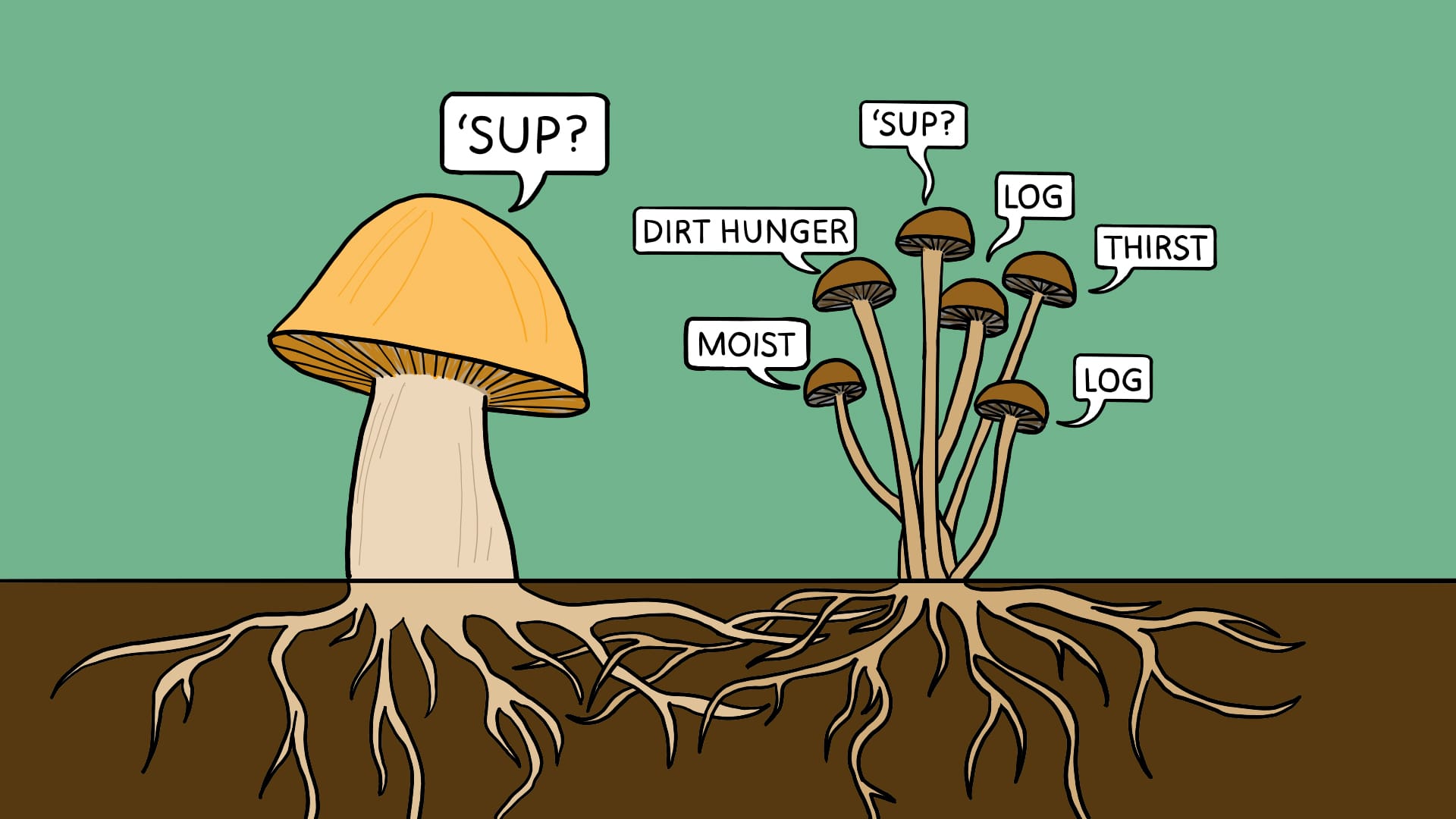
Mycorrhizal networks were first discovered by Canadian forestry scientist Suzanne Simard in 1997:
She used rare carbon isotopes as tracers in both field and greenhouse experiments to measure the flow and sharing of carbon between individual trees and species, and discovered, for instance, that birch and Douglas fir share carbon. Birch trees receive extra carbon from Douglas firs when the birch trees lose their leaves, and birch trees supply carbon to Douglas fir trees that are in the shade.
Incidentally, our underground fungal friends play an enormous role in sequestering carbon dioxide, which prevents it from worsening climate change. Mycorrhizal networks may store about one-third of all global emissions from fossil fuels—13 billion metric tons. Yes, that's 'metric tons' as in '2,205 pounds per metric ton.'
Does it surprise you to learn that over 90% of the world's fungal 'hotspots' are unprotected?
But that's a subject for another day. We're trying to construct a metaphor, here.
To transform our energy system into a forest, we'll need three things: trees, a fungal network, and, uh, wood elves.
The trees
Each tree in our forest represents one microgrid.
A microgrid is a fancy name for a small, self-sufficient energy grid. To construct a microgrid, you need a power producer (like solar panels), a way to store energy (like batteries), and an inverter.
Microgrids can operate two ways. They can plug into the energy grid, from which they may take or give energy, or they can cut themselves off from the grid and operate independently (i.e. go 'island mode'). A microgrid might go island mode to save on electricity costs or to keep the lights on during a blackout.
In our metaphorical forest, a tree isn't just a house with rooftop solar panels. That would be more like a leaf. Rather, our trees consist of whole communities—a street, a neighborhood, a subdivision—and all the energy they collectively generate.
Ideally, our trees would generate most of their energy from publicly owned power, like the brand new community solar farm in Brooklyn's Sunset Park neighborhood:
The 725-kilowatt solar array will deliver clean and reliable electricity to about 200 Sunset Park families and businesses, reducing greenhouse gas emissions and lowering energy bills by 20 percent. Revenue from the 45,000-square-foot installation will go into a community wealth fund to support projects such as additional solar initiatives.
If they threw in a few of these nifty stackable batteries from CATL, then they'd really be cooking.
Our forest will be home to many trees of different shapes and sizes.
The fungal network
The good news is that our forest already has a fungal network in place. It's called the distribution grid—the intricate web of wires that utility companies rely on to deliver electricity to our homes.
Since all our homes are plugged into the same energy grid, we could theoretically use our existing distribution wires to trade energy with our neighbors just like you might borrow a cup of sugar. On days your microgrid isn't able to meet demand, the microgrid across the way can send you some cheap energy. Kind of like trees do when one of their buddies gets struck by lightning or attacked by an invasive species of butterfly.
The bad news is that our existing distribution grid is not up to the task. It was designed for our current energy system, in which power flows but one way: down from the big, centralized power producers.
The okay news is that our distribution grid can be upgraded with Grid Enhancing Technologies (GETs). It'll cost a pretty penny, but so will any attempt to solve the impending energy crisis. And like so much else in the clean energy world, the upfront price costs far less in the long run than the price we'll pay for inaction.
The wood elves
If our forest only had a few trees, it would be pretty easy to keep everyone happy. A cloud passes over one tree, a tree in the sun sends it some nutrients.
But this starts to get tricky when there are a lot of trees in the picture, each with its own continually fluctuating supply and demand.
To grow a big forest with lots of trees, we're gonna need folks to keep things running smoothly at every level.
Enter the wood elves.
Wood elves live in the forest, obviously. They're conversant in the 50-word mushroom language. They spend their days keeping tabs on the health of the trees they were assigned at birth and trading notes with other wood elves, everyone doing their elfin best to keep the system perfectly balanced. The Keebler Elves are distantly related.
Wood elves are my version of what energy philosopher Lorenzo Kristov terms Distribution System Operators (DSOs).
Now's probably a good time to tell you this essay is heavily inspired by Kristov's vision for a 'layered grid architecture.' You can learn more about what that means by listening to this episode of Volts.
Layered grid architecture is tricky to explain—hence this already convoluted forest metaphor—but I'll give it a shot.
Kristov envisions not just one forest of microgrids, but forests within forests.
This is getting heady, so let's bring it back to the real world.
Layered grid architecture at a glance
Let's imagine that the Sunset Park neighborhood of Brooklyn, which I previously mentioned, turns into a full-fledged microgrid.
Let's imagine its neighbor to the south, Bay Ridge, also invests in community solar and batteries and becomes a microgrid, too.
Hell, let's imagine every neighborhood in Brooklyn becomes a microgrid! Microgrids for everyone!
These newly minted microgrids talk to each all the time (via industrious wood elves). They help each other out, they keep their miniature grids balanced. Ours is a happy little forest. (I am blatantly mixing metaphors here, sorry.)
But if you zoom out a couple clicks, you might look down and see how all the Brooklyn microgrids actually form a single distribution layer—a Brooklyn Forest microgrid layer.
You could do the exact same thing in Queens and Manhattan and the Bronx and Staten Island, right?
So now, instead of a bunch of scattered neighborhood microgrids keeping themselves balanced, you've got borough-size microgrids doing the same thing. If Queens blows a gasket, the other boroughs can step up and send it some spare juice.
Zoom out again and you'll see how all of New York City forms a single distribution layer. Now, when Philly needs some brotherly love, New York City, Baltimore, and DC can all pitch in.
Zoom out again, and again, and again, until at last there remain seven continental distribution layers made up of millions of microgrids layered upon microgrids, all keeping each other balanced at the layer level.
That's what it means to reimagine our energy system from the bottom up.
Wood elves at every level
Lorenzo Kristov was once a principle at the California Independent System Operator (CAISO), the organization that monitors the health of the California energy grid. So I believe him when he says it would be a terrible idea for Independent System Operators (ISO) like CAISO to try and dispatch tens of thousands of individual Distributed Energy Resources.
Things would get chaotic in a hurry. To prevent that outcome, what you need, Kristov argues, are operators running the show at every layer. We need wood elves overseeing Sunset Park (microgrid managers), wood elves to run Brooklyn (area operators), wood elves at the city layer, all the way up (higher-level grid operators).
With robust operational oversight in place, the wood elf operating the Brooklyn microgrid isn't responsible for tracking every single solar panel in the borough. There are dedicated microgrid manager wood elves to do that; they compile a dossier for the borough-level wood elves to read on the john.
The Brooklyn elves, of course, aren't just sitting around all day; they must prepare a dossier for the elves managing the grid layer above them to read on the john. Elves at all levels, compiling data, tracking trends, simplifying stats for the layers above them. That's how we make the whole thing work.
You lost me at 'elves reading dossiers on the john'. Remind me of the benefits again?
Let's go bullet-point mode.
- In our current top-down system, if one big transmission line gets knocked down during a storm, a whole city could lose power until the line gets fixed.
- That wouldn't happen in a bottom-up system, because every community is responsible for making some or all of their own energy. Whatever they can't produce, they can obtain cheaply and immediately from their closest neighbors, assuming the neighbors have energy to spare. Should a whole layer of microgrids fail, the layer immediately on top of theirs would step in to provide cover. And so on and so on.
- When communities collectively own their own power generation (i.e. community solar), it doesn't matter where in the community the solar panels and batteries are located. Everybody within the microgrid stands to benefit equally.
- That's not the case in a VPP model, where only select households can participate.
- In a bottom-up model, communities are incentivized to put solar panels and batteries everywhere they can. Doing so generates more total energy, improves resilience, and brings in more money. We want to incentivize communities to build as much clean energy as they possibly can.
Cool. Is there any chance of this ever happening?
There's always a chance.
One thing I ought to mention is that Kristov doesn't think we'll ever reach a point where microgrids alone can meet our total energy demand. There will always be a sizable energy remainder—thirty to sixty percent, depending on the climate—that must be met by the old top-down system, i.e. big power producers funneling energy to the cities from afar.
What's unambiguous to me is that DERs are going to take off one way or another, for the simple reason that the Trump administration is currently attacking the clean energy movement from every angle. The latest affront to God: "EPA’s chief saboteur, Lee Zeldin, announces plan to delete climate science"
Good times.
Whether renters like myself will be thanking VPP VIPs for the scraps of savings they toss our way, or whether we'll all live in a world of publicly owned generation that meets the energy needs of all people, remains to be seen.
For now, it's something of a pipe dream. But the next time your power blacks out because there's too much demand for air conditioning and Trump unplugged all the wind turbines and solar panels, remember the microgrid.
Remember the forest.
Remember how we must become the forest.

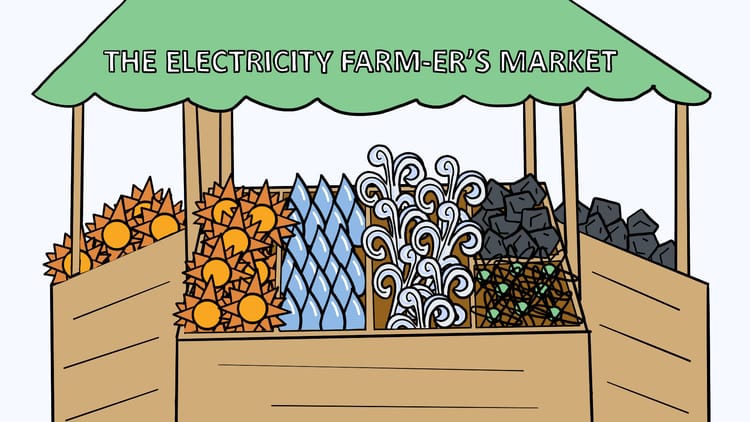
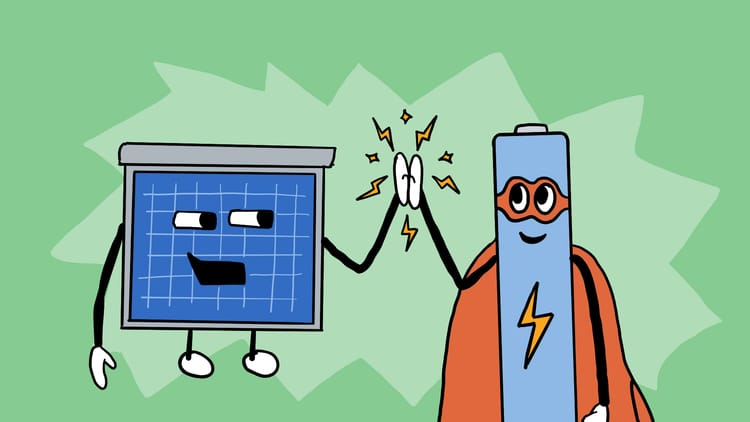

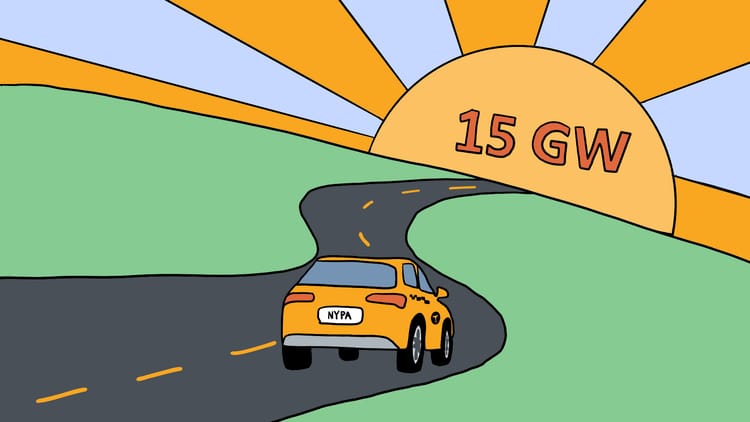
Member discussion